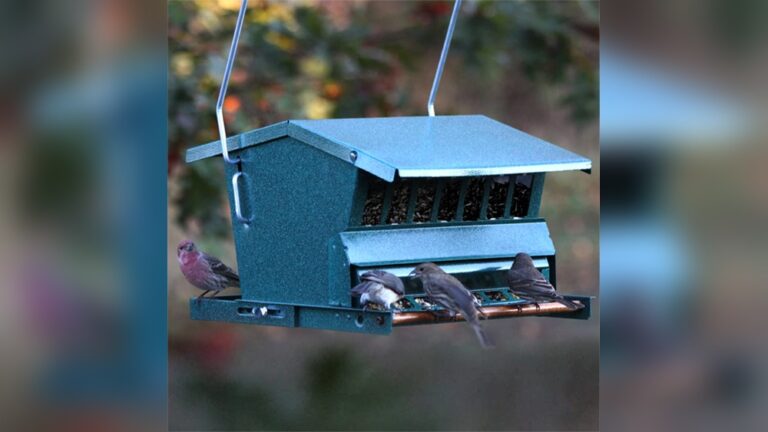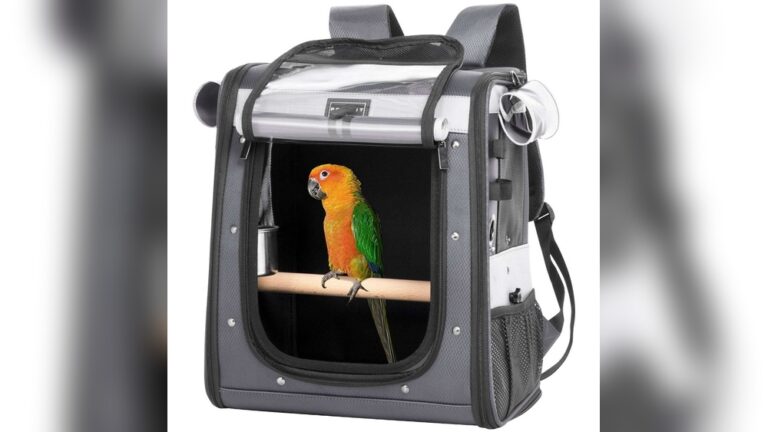About Sandhill Cranes Fascinating Facts Migration Secrets
Have you ever watched a group of birds glide across the sky in perfect formation and wondered where they’re heading? Sandhill cranes are among nature’s most fascinating travelers.
Their migration secrets and unique behaviors might surprise you. You’ll discover amazing facts about these graceful birds that will change the way you see them forever. Get ready to unlock the mysteries of sandhill cranes and see why they capture the attention of bird lovers everywhere.
Keep reading—your curiosity will thank you.
Sandhill Crane Characteristics
Sandhill cranes are large, graceful birds known for their unique traits. Their characteristics make them easy to identify and interesting to observe. These cranes have special features that help them survive and thrive in many environments.
Understanding their physical traits, lifespan, behavior, and habitat helps us appreciate these birds more. Each characteristic plays a role in their life and migration patterns.
Physical Features
Sandhill cranes are tall birds, standing up to 4 feet high. They have long legs and necks, perfect for wading in shallow water. Their feathers are mostly gray with hints of rusty brown. Red patches appear on their heads, making them stand out. Their wingspan can reach up to 7 feet, helping them soar long distances during migration.
Lifespan And Behavior
These cranes live about 20 to 30 years in the wild. They are social birds that often travel in groups called flocks. Sandhill cranes perform loud, trumpet-like calls to communicate. Their dances, with bows and jumps, are part of their courtship and bonding. They mate for life and show strong family ties.
Habitat Preferences
Sandhill cranes prefer open wetlands, marshes, and grasslands. These areas offer food and safe nesting spots. They often choose shallow water places to build nests. During migration, they stop in fields and prairies to rest and feed. Their choice of habitat supports their diet of plants, insects, and small animals.

Credit: www.nju.edu.cn
Migration Patterns
Sandhill cranes show some of the most impressive migration patterns in the bird world. These large birds travel thousands of miles every year. Their journeys reveal important survival tactics and natural instincts. Understanding these patterns helps us appreciate their resilience and strength.
Routes And Destinations
Sandhill cranes follow specific routes during migration. Many fly from Canada and the northern United States to warmer southern states. Some travel as far as Mexico. These paths often follow river valleys and open plains. The birds stop at wetlands to rest and feed. These spots are crucial for their energy and safety.
Timing And Triggers
Migration timing depends on daylight and temperature changes. Sandhill cranes sense these shifts through their internal body clocks. They begin migration in early fall and return in spring. Weather patterns and food availability also affect their schedule. These triggers ensure the birds move before harsh conditions arrive.
Challenges During Migration
Migration is dangerous and exhausting for sandhill cranes. They face storms, strong winds, and cold temperatures. Human activity disrupts their routes and resting places. Finding enough food along the way can be hard. Despite these challenges, sandhill cranes display great endurance and teamwork during migration.
Communication And Social Life
Sandhill cranes are known for their strong social bonds and clear communication. Their social life helps them survive long migrations and find mates. They use sounds and movements to share messages within the flock. Understanding their communication reveals much about their behavior and survival.
Calls And Sounds
Sandhill cranes have loud, trumpeting calls. These calls can travel long distances. They use calls to warn others about danger. Calls also help keep the flock together during flight. Each crane has a unique call that helps identify it.
Flock Dynamics
These birds travel in large groups called flocks. Flocks provide safety and help find food. Older cranes guide younger ones during migration. Inside the flock, birds show respect by body language. They often walk or fly in synchronized patterns.
Mating Rituals
Sandhill cranes perform dances to attract mates. Their dances include bowing, jumping, and wing flapping. Pairs strengthen their bond through these rituals. Dancing is both a social and mating behavior. Strong pairs often stay together for life.

Credit: www.allaboutbirds.org
Feeding Habits
Sandhill cranes have unique feeding habits that help them survive in many places. Their diet and how they find food change with the seasons. These habits are key to their migration and daily life.
Understanding what and how they eat reveals much about their behavior and environment. Their feeding methods show their adaptation to different habitats.
Diet Composition
Sandhill cranes eat plants, insects, and small animals. They favor seeds, berries, and grains from fields. In wetlands, they consume snails, frogs, and small fish. Their diet varies depending on the area and food availability. This mix helps them get enough energy for long flights.
Foraging Techniques
These cranes use their long beaks to probe soil and water. They pick up food items by sight or feel. Sometimes they walk slowly in shallow water to find prey. They may also dig in mud to reach hidden food. Their careful searching helps them find food even in tough conditions.
Seasonal Variations
Food choices change with the seasons. In spring and summer, cranes eat more insects and small animals. In fall, they focus on grains and seeds to build fat for migration. Winter diets often include leftover crops and roots. These changes keep them strong throughout the year.
Conservation Status
Sandhill cranes face many challenges that affect their survival. Their conservation status shows how these birds need care and protection. Some populations are stable, but others face risks that could reduce their numbers. Understanding these risks helps us protect them better.
Threats To Populations
Loss of wetlands harms sandhill cranes. These birds rely on wetlands for nesting and feeding. Human activities like farming and building take away these habitats. Hunting also reduces some crane populations. Pollution and climate change add more pressure to their survival.
Protection Efforts
Many groups work to save sandhill cranes. Protected areas help keep their habitats safe. Laws limit hunting during migration seasons. Restoration projects rebuild wetlands and feeding grounds. Education raises awareness about their importance. These efforts help cranes live and breed safely.
Role In Ecosystems
Sandhill cranes play an important role in nature. They help spread seeds, which grows plants. Their feeding controls insect and small animal numbers. Cranes also support wetland health by moving nutrients. Protecting cranes means protecting the whole ecosystem.

Credit: www.birdsandblooms.com
How Smart Pets Lover Can Help You with About Sandhill Cranes Fascinating Facts Migration Secrets
Learning from Sandhill Cranes: Nature’s Lessons on Migration and Social Bonds
Understanding sandhill cranes goes beyond fascinating facts—it opens doors to practical learning about animal behavior and conservation. Observing their migration patterns and social life reveals the importance of teamwork and communication, lessons we can apply when caring for our own pets. For example, just as sandhill cranes rely on clear calls and social connections during long journeys, pet parents benefit from consistent communication and social interaction to build trust with their animals.
Feeding habits of these birds also remind us to pay close attention to diet variety and nutritional needs, whether for wild birds or our companion animals. At Smart Pets Lover, we believe that every wag, purr, and chirp tells a story, encouraging pet owners to foster deeper bonds through informed care.
- Explore local wildlife preserves during migration seasons to witness cranes firsthand and deepen your understanding of animal behavior.
- Incorporate principles of socialization and communication learned from cranes into training routines for dogs or birds.
- Consult trusted resources or reach out to local wildlife experts to learn more about conservation efforts impacting both wild and domestic animals.
For anyone curious about expanding their knowledge or seeking guidance on pet care inspired by nature, Smart Pets Lover offers a warm, trustworthy community ready to support your journey. Feel free to connect via our website or social channels for thoughtful insights and shared passion.
Frequently Asked Questions
What Are The Key Characteristics Of Sandhill Cranes?
Sandhill Cranes are large birds with gray plumage and red crowns. They have long legs and necks. They are known for their loud, trumpeting calls and graceful courtship dances. These cranes are highly social and often travel in flocks.
How Do Sandhill Cranes Migrate Each Year?
Sandhill Cranes migrate thousands of miles between breeding and wintering grounds. They use thermal air currents to glide efficiently. Migration routes often follow river valleys and stopover wetlands. This helps conserve energy during their long journey.
Why Do Sandhill Cranes Perform Elaborate Courtship Dances?
Their courtship dances strengthen pair bonds and communication. These dances include bowing, jumping, and wing-flapping. Dancing helps synchronize mating behaviors and maintain lifelong partnerships. It also signals fitness to potential mates.
Where Do Sandhill Cranes Typically Breed And Winter?
They breed in northern North America, including Canada and Alaska. During winter, they migrate to southern U. S. states and northern Mexico. Wetlands and open fields are preferred habitats for both breeding and wintering.
Conclusion
Sandhill cranes are truly amazing birds. Their migration journeys cover thousands of miles. These cranes use the sun, stars, and Earth’s magnetic field to navigate. They travel in groups to stay safe and warm. Watching their dances and calls is a special experience.
Learning about their habits helps us protect them better. Nature’s wonders like sandhill cranes remind us to care for our planet. Their stories inspire curiosity and respect for wildlife. Keep observing and appreciating these graceful travelers. Their migration secrets show how life adapts and thrives.







